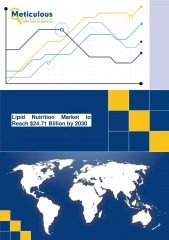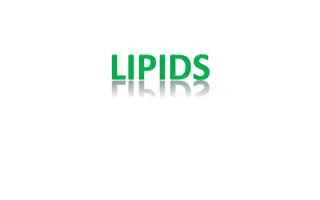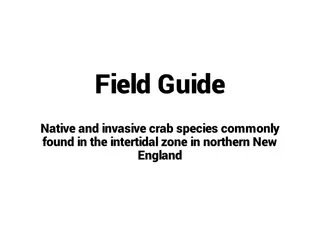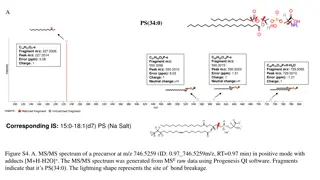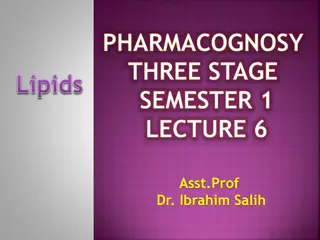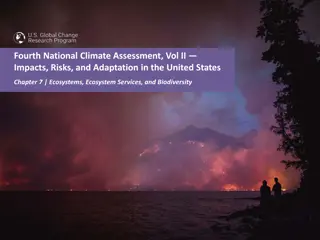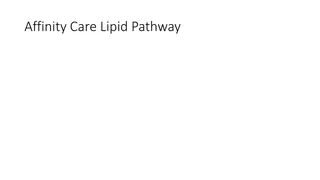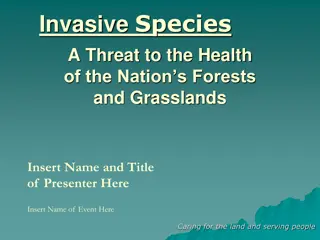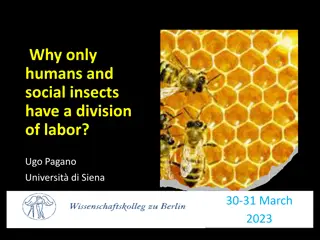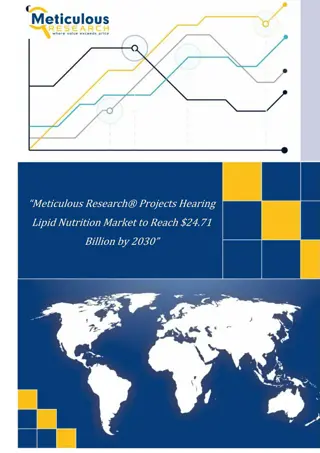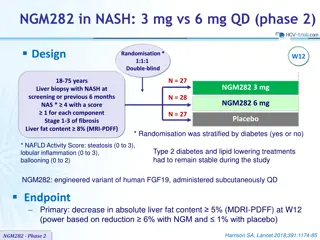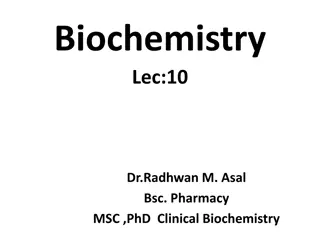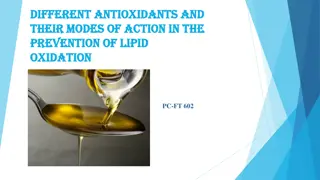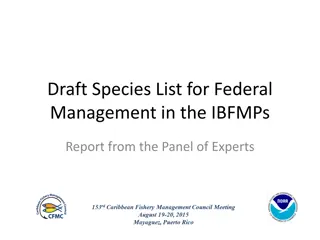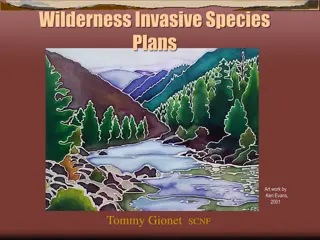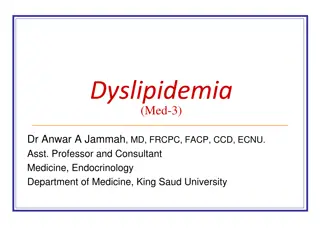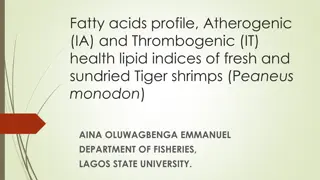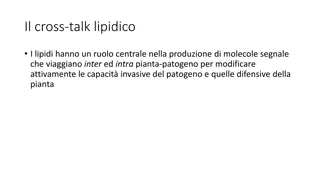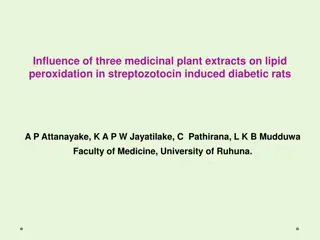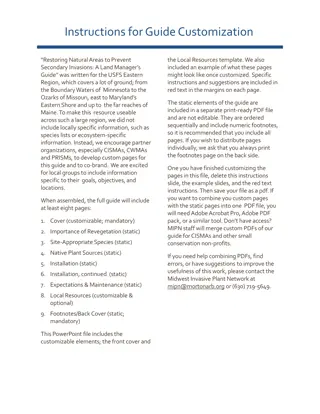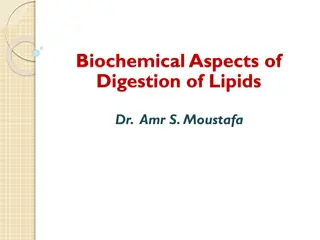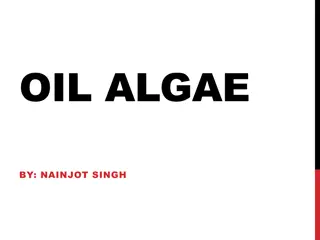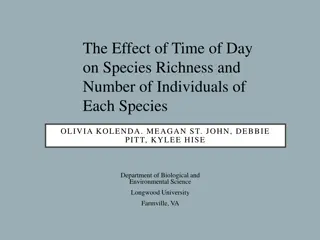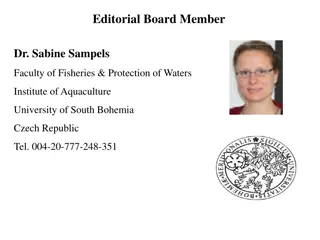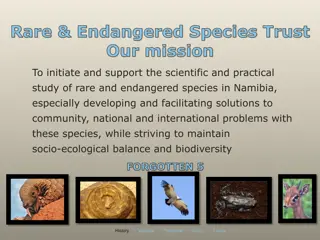Lipid Nutrition Market to Reach $24.71 Billion by 2030
Lipid Nutrition Market by Type (Omega-3, Medium Chain Triglycerides (MCT), Omega-6, Omega-9) Source (Marine, Plant), Form (Liquid, Dry), Application (Dietary Supplements, Food & Beverages, Pharmaceuticals, Animal Feed) - Global Forecast to 2030
1 views • 3 slides
Understanding Invasive Species Transmission Pathways
Explore the identification and transmission pathways of priority pests, focusing on the measures like plant pest analysis, survey enhancement, and rapid response capabilities for invasive species management. Delve into the critical role of human interactions in creating pathways for invasive species
2 views • 17 slides
Understanding Invasive Species in Northwest Michigan
Explore the impact of invasive species in Northwest Michigan through images and data on habitat support for butterfly and moth species, the transition of non-native plants to becoming native, and the definition of what makes a species invasive. Learn about the threats posed by non-native species and
4 views • 15 slides
Lipid Nutrition Market to Reach $24.71 Billion by 2030
Key Questions Addressed:\n\nWhat is the current market value of the global lipid nutrition market?\nWhat is the projected growth rate of the lipid nutrition market for the next 5\u20137 years?\nWhat are the historical market sizes and growth rates?\nWhat are the major factors influencing market grow
4 views • 4 slides
Understanding Cladograms and Phylogenetic Analysis
Cladograms are used in cladistics to illustrate evolutionary relationships between organisms based on shared ancestral and derived characters. They are created by grouping species by common descent, forming clades that include an ancestral species and all its descendants. Valid clades are monophylet
0 views • 11 slides
Understanding Cell Membrane Transport: Diffusion and Facilitated Diffusion
Cell membrane transport plays a crucial role in maintaining cellular functions by regulating the movement of substances across the membrane. Diffusion, a passive transport process, allows molecules to move from areas of high concentration to low concentration without energy expenditure. Within diffu
1 views • 20 slides
Understanding Biodiversity and Conservation: Importance and Key Concepts
Biodiversity is the variety of life on Earth, encompassing all species and ecosystems. Conservation efforts are crucial to preserve genetic, species, and ecological diversity. The values of biodiversity range from productive and economic to social and aesthetic. Maintaining a balance in ecosystems,
4 views • 17 slides
Overview of Lipids: Classification and Biological Importance
Lipids are organic substances that play a crucial role in biological systems. They include simple lipids, complex lipids like phospholipids and glycolipids, and derived lipids. Simple lipids are esters of fatty acids with various alcohols, while complex lipids are sub-classified based on the type of
2 views • 38 slides
Field Guide to Native and Invasive Crab Species in Northern New England Intertidal Zone
This field guide provides detailed information on native and invasive crab species commonly found in the intertidal zone in northern New England. It includes identification features and distinctions among the species, serving as a useful tool for conducting intertidal green crab quadrat surveys. The
0 views • 4 slides
Mechanism of General Anaesthesia Theories: Lipid Solubility, Surface Tension, Microcrystal, Protein Binding
Mechanism of general anaesthesia involves theories focusing on the interaction of anaesthetics with cell membrane components like lipids and proteins. The Lipid Solubility theory emphasizes the importance of an anaesthetic's affinity and solubility in nerve cell membranes, while the Surface Tension
1 views • 10 slides
Mass Spectrometry Analysis of Lipid Species
Detailed mass spectrometry data for various lipid species including APS(34:0), PI(O-36:1), C24(OH) Sulfatide, and PE(O-33:0) is provided in positive mode with corresponding adducts and neutral changes. The MS/MS spectra reveal fragment ions and structural information for each lipid species, aiding i
1 views • 4 slides
Understanding Lipids: Importance, Digestion, and Absorption
Professor Shraddha Singh's lecture series delves into the significance of lipids, the types of lipids, and the role of bile in digestion. Learn about saturated vs. unsaturated fatty acids, common fatty acids found in lipids, lipid structures, and properties. Explore the diverse types of fats we cons
2 views • 32 slides
Energy Yield from Lipid Oxidation Process
Understanding the energy generation process from lipid oxidation involves the conversion of fatty acids into Acetyl-CoA through multiple rounds of oxidation, which then enter the Krebs cycle to produce ATP. Each round of oxidation results in the production of Acetyl-CoA, NADH, FADH2, and net gains o
0 views • 7 slides
Introduction to Lipid Biosynthesis and Fixed Oils in Pharmacognosy Lecture
In this lecture by Asst. Prof. Dr. Ibrahim Salih, the focus is on lipid biosynthesis, specifically the three phases involved: glycerol formation, fatty acid biosynthesis, and triglyceride production. The classification of fixed oils into drying, semi-drying, and non-drying categories based on their
0 views • 13 slides
Impacts of Climate Change on Ecosystems and Biodiversity in the United States
Climate change is significantly affecting species, populations, and ecosystems in the United States. Changes include alterations in the characteristics of organisms, shifts in biological event timing, and disruptions in geographic ranges. These impacts can lead to extinctions when species can't adap
0 views • 16 slides
Affinity Care Lipid Pathway Summary and Assessment
The Affinity Care Lipid Pathway outlines a systematic approach to assessing lipid/cholesterol blood results in individuals over 16 years old. It includes guidelines for managing cholesterol levels, assessing familial hypercholesterolemia, and determining appropriate medication options based on indiv
0 views • 5 slides
Exploring Alcohols in Lipid Structures and Their Importance
Delve into the world of derived lipids alcohols, such as glycerol, sphingosine, and cholesterol, which play vital roles in various forms of lipids. Learn about the classification of alcohols involved in lipid structures and their significance as derived lipids. Discover how glycerol, a polyol, acts
0 views • 67 slides
Managing Invasive Species to Safeguard our Forests
Invasive species pose a significant threat to the health of our nation's forests and grasslands, causing ecological, biological, and economic losses. This presentation highlights the impact of invasive species and underscores the importance of collaborative efforts to effectively combat this problem
2 views • 14 slides
Understanding Lipid Compounds and Their Physiological Significance
Explore the world of lipid compounds and their vital roles in the body, including serving as a major energy source, structural components of cell membranes, and key regulatory molecules. Learn about various types of lipids, such as fatty acids, phospholipids, and lipoproteins, and their relevance to
0 views • 24 slides
Evolution of Division of Labor in Humans and Social Insects
Evolutionary advantages of cooperation and specialization led to a developed system of social cooperation and division of labor in humans and social insects. Despite vast differences, these species have conquered the earth due to common characteristics. The puzzle lies in why only a few species evol
0 views • 23 slides
Optimal Management of Lipids for Secondary Prevention Team Study
Lipid management in secondary prevention plays a crucial role in reducing cardiovascular risk. This study led by Dr. Timir Paul aims to address system-level gaps in care, enhance communication for optimal therapy, and empower patients in achieving target lipid levels. By recognizing disparities and
0 views • 28 slides
Caribbean Fishery Management Council Scientific and Statistical Committee Report 2012
The Scientific and Statistical Committee (SSC) of the Caribbean Fishery Management Council reviewed species units with Annual Catch Limits (ACL) overages and discussed research priorities. When ACLs are exceeded, accountability measures are triggered, leading to a reduction in the fishing season. Th
1 views • 26 slides
Lipid Nutrition Market by Size, Share, Forecast, & Trends Analysis to 2030
According to the latest report from Meticulous Research\u00ae, the global lipid nutrition market is anticipated to reach $24.71 billion by 2030, with a compound annual growth rate (CAGR) of 8.9% from 2023 to 2030. This growth is primarily driven by r
0 views • 4 slides
The Impact of Invasive Species on Biodiversity and Ecosystems
The introduction of foreign species can have detrimental effects on biodiversity, ecosystems, and even humans. Invasive species like the Sea Lamprey and Burmese Python disrupt natural habitats, leading to a decline in biodiversity and posing risks to native species and human populations. However, th
0 views • 13 slides
NGM282 in NASH Phase 2: 3 mg vs 6 mg QD Randomised Trial
This Phase 2 clinical trial compares the efficacy of NGM282 (3 mg vs 6 mg) versus placebo in patients with NASH. The primary endpoint is a 5% reduction in liver fat content at 12 weeks. Randomisation was stratified by diabetes status, and stable Type 2 diabetes and lipid-lowering treatments were mai
0 views • 6 slides
Understanding Lipid Biochemistry: A Comprehensive Overview
Lipids are a diverse group of compounds crucial for various biological functions. They include fats, oils, steroids, and waxes with unique properties essential for energy storage, insulation, and nerve function. Knowledge of lipid biochemistry is pivotal in understanding areas like obesity, diabetes
0 views • 38 slides
Understanding Antioxidants and Their Role in Preventing Lipid Oxidation
Lipid oxidation is a crucial chemical process affecting the quality of fats and oils, leading to off-flavors and toxicity. Antioxidants play a vital role in delaying this oxidation process by scavenging free radicals through mechanisms like free radical scavenging. They help prolong the shelf life a
0 views • 12 slides
Draft Species List for Federal Management in IBFMPs Report
Panel of Experts was tasked with developing a draft list of species for federal management in Island-Based Fishery Management Plans (IBFMPs). Approaches outlined for selecting species include considering factors like species occurrence in State waters, stock status, ecological importance, and econom
0 views • 27 slides
Understanding the Impact of Invasive Species in Wilderness Management
Invasive species pose a significant threat to the ecosystem by causing disruptions in biodiversity and ecosystem health. This article discusses the importance of managing invasive species in wilderness areas and provides insights into creating successful Invasive Species Plans. It sheds light on the
0 views • 22 slides
Understanding Dyslipidemia and Lipid Transport in Atherosclerosis
Dyslipidemia is characterized by abnormal levels of lipids in the blood, leading to atherosclerosis. Lipid transport mechanisms play a crucial role in the formation and progression of atheromas in artery walls. Chylomicrons carry fats from the intestine to the liver, where they are processed into LD
0 views • 54 slides
Fatty Acids Profile and Health Lipid Indices of Tiger Shrimps
Seafood lipids, including Tiger shrimps like Peaneus monodon, are rich in essential fatty acids such as EPA, DHA, and AA. This study focuses on the fatty acids profile, atherogenic (IA), and thrombogenic (IT) health lipid indices of fresh and sundried Tiger shrimps, shedding light on the effects of
0 views • 19 slides
Role of Lipids in Plant-Pathogen Interaction
Lipids play a central role in signal molecule production for actively modifying the invasive capabilities of pathogens and the defensive mechanisms of plants during inter and intra-plant-pathogen interactions. They are essential constituents of membranes, providing structural support and serving div
0 views • 43 slides
Influence of Medicinal Plant Extracts on Lipid Peroxidation in Diabetic Rats
Traditional medicinal plant knowledge plays a crucial role in diabetes treatment. Free radicals and oxidative stress are key factors in diabetic complications. This study investigates the effects of three plant extracts on lipid peroxidation in diabetic rats, highlighting the potential benefits of n
0 views • 20 slides
Northwest Michigan Invasive Species Network Overview
The Northwest Michigan Invasive Species Network (ISN) is a Cooperative Invasive Species Management Area dedicated to managing invasive species in northwest Michigan's natural areas. Founded in 2005 and funded through grants and private donations, ISN collaborates with over 60 partners to address inv
0 views • 5 slides
Biochemical Aspects of Lipid Digestion by Dr. Amr S. Moustafa
This lecture by Dr. Amr S. Moustafa covers the biochemical aspects of lipid digestion, including the process, organs involved, enzymes required, and end products. It discusses the assembly, metabolism, and fate of chylomicrons, as well as the clinical manifestations of diseases related to defective
0 views • 31 slides
Factors Affecting Algal Ecology: Light Intensity Impacts on Algae Growth and Composition
Light intensity plays a crucial role in the growth and composition of algae. Algae undergo photoadaptation processes to adjust to varying light levels, affecting their photosynthetic efficiency and cellular properties. High light intensity can lead to photoinhibition and changes in cellular composit
0 views • 19 slides
The Future of Algae Fuel: A Promising Solution for America's Energy Needs
Algae biofuel technology is essential for improving fuel sources in America. Algae's high lipid content makes it a pure source of biodiesel, with bio-engineered strains now containing up to 80% lipid. Algae fuel production, while promising, is a tedious and expensive process. Despite the challenges,
0 views • 8 slides
Effect of Time of Day on Bird Species Richness and Individuals
The study investigates how the time of day impacts the species richness and number of individuals of birds at a specific feeder in Longwood University's Environmental Education Center. Through observational studies and counting, the researchers aim to determine if there are differences in bird popul
0 views • 20 slides
Dr. Sabine Sampels: Research on Aquaculture, Fish Quality, and Human Health
Dr. Sabine Sampels, a member of the Editorial Board at the University of South Bohemia, Czech Republic, specializes in studying the effects of fish consumption on human health, animal nutrition on fish quality, and lipid metabolism. With a background in Food Chemistry and extensive research experien
0 views • 25 slides
Rare & Endangered Species Trust: Protecting Namibia's Vultures and Pangolins
Rare & Endangered Species Trust in Namibia focuses on studying and supporting rare and endangered species, particularly vultures and pangolins. With a mission to find solutions to conservation challenges and maintain biodiversity, the trust highlights the history, crisis, and future prospects for th
0 views • 19 slides
